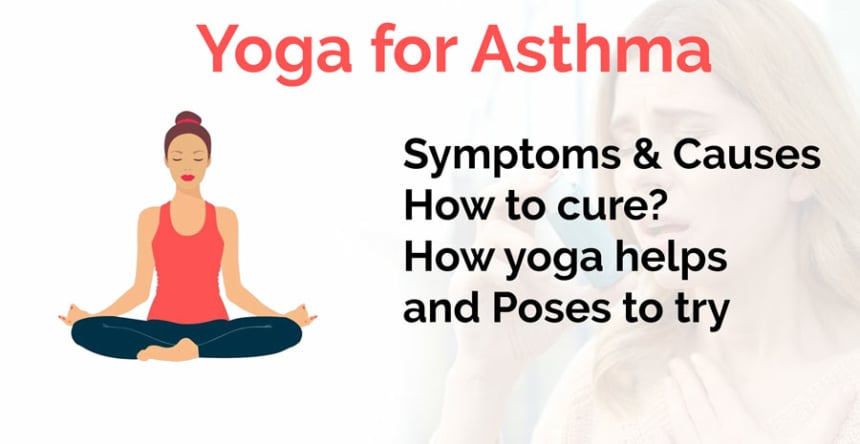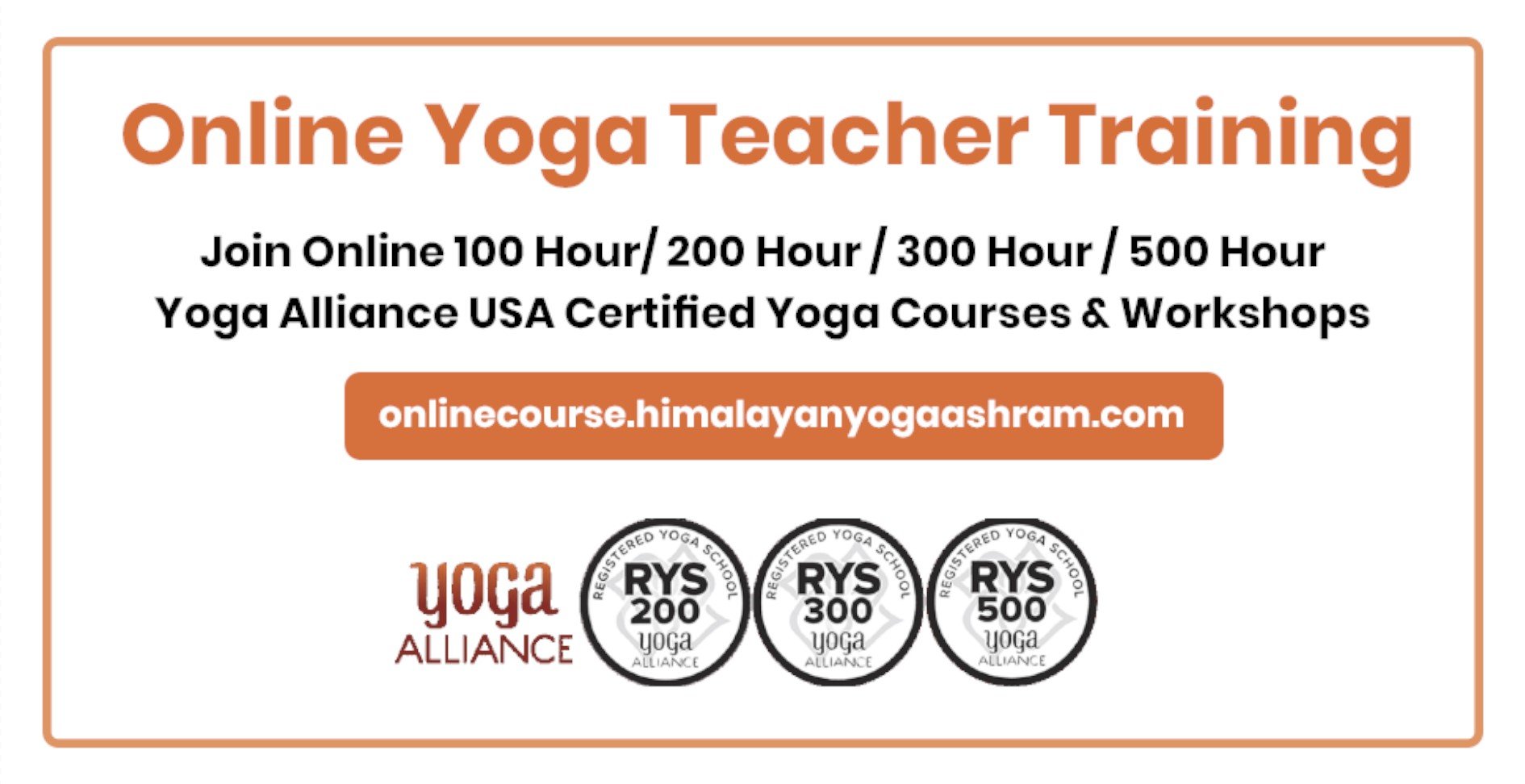Yoga for Asthma: Symptoms, Causes, How to cure? How yoga helps and poses to try
By Himanshu JoshiYogaashtama, asthma cure, ayurveda treatment, disease, treatment, yoga, yoga ayurvedaOne of the most vital elements that sustain life is air. But sadly, the air we breathe in most of the cities is polluted and hence the main cause of respiratory diseases. It has given rise to asthma cases and poses a major challenge to quality of life. There have been reports of average lifespan of people getting shortened by 5-10 years in metros due to a bevy of breathing issues.
Many people suffering from asthma have shifted from Delhi to smaller towns and hill stations as their conditions aggravated during the start of winters when air quality deteriorates. In other metro cities also, this trend has been noticed. The growing pollution level even in small towns at times make one think that asthmatic conditions are inevitable the way environment degradation is happening.
Perhaps the only long-lasting solution to deal with the breathing issues is Yoga.
A lung disease, asthma causes chest tightness, makes breathing harder and often produces extra mucus. It has been seen that the conditions become severe when there is a change of weather. If triggered during night asthma can seriously affect sleep quality and hence making the following day difficult to work with full potential. In social gatherings, it could be an embarrassment.
Yoga can not only prevent the progress of asthma but can also improve longevity by significantly improving the lung function. Regular practice of asanas (yoga postures) and pranayamas (breathing exercises) reduces the severity of the disease.
Read More:
What are the Symptoms of Asthma
Frequent coughing and shortness of the breath are the most common symptoms of asthma. In many patients, there is a whistling sound or wheezing and shortness of breath. In severe conditions, it completely alters daily activities.
Full-blown asthma attack could be life-threatening. It is said that asthma can not be completely cured but its symptoms can be very well managed. In case of severe asthma, Yoga is not considered the first line of treatment but once various conditions are managed to ameliorate the situation, yoga can be practiced regularly to improve lung functions.
Symptoms of asthma vary from patient to patient and changing atmospheric conditions impact them differently. For instance, some people may experience shortness of breath while taking a few steps of the stairs. In many others, the symptoms appear when pressure is exerted on the body as a result of excessive exercise or moderate physical work.
Common symptoms of Asthma are as under
- Shortness of breath
- Wheezing sound while breathing
- Frequent coughing
- Difficulty in breathing
- Respiratory problem causing unease in sleeping
- Chest tightness or pain
Symptoms of severe asthma include the need for an inhaler quite often, frequent coughing attack and the feeling of excessive weakness after coughing. In these conditions, immediate medical care is required. Severe asthma could be triggered by allergic substances in the air.
People with asthma may feel clogging of the air passage and a number of reasons could be behind this. One of the most common causes that triggers asthma flare-up is seasonal cold and flu. Unhygienic food habits aggravate the condition and lead to worsening of the symptoms once attacked. To be sure, in many people the cause of asthma could be family history.
Following are the most common issues that trigger asthma or its flare-up:
- Seasonal cold and flu
- Allergies such as dust, pollen, smoke, fumes and bad air
- Anxiety and stress
- Closed workplace with allergens in the air
- Changing weather leading to sharp rise or fall of temperature, heat and humidity
Those with a long history of asthma generally sense the trigger by observing the pattern over a longer period of time. They can easily prepare themselves to avoid the attack by practicing recommended pranayamas, improving food quality by including vitamin and mineral rich vegetables and fruits, avoiding extremely cold foods and maintaining a healthy lifestyle.
Yoga is a very effective preventive measure in asthma as in case of many lifestyle and chronic diseases. It alleviates the symptoms and within days makes you feel better. Yoga works at multiple levels to benefit the practitioner. While at physical level it improves postures and enhances lung capacity, at mental level it reduces stress which has fast become a major trigger of the disease in the busy city life.
Here are some of the yoga postures you can try to alleviate asthma conditions:
Setu Bandha Sarvāṅgāsana or Bridge pose
The pose is very effective in opening the chest and deeper breathing. It energies and rejuvenates the whole body. It stretches the chest, neck and spine and helps at both physical and mental level. While it stimulates the abdominal organs and lungs, it also calms the mind thus alleviating stress and mild depression. It addresses the issue of high blood pressure and prevents sinusitis. As it improves blood circulation across the spine calming the nerves, it helps in improving sleep quality.
To do the Bridge pose, lie on the Yoga mat with your back on the floor. Keep your shoulders and feet apart slightly. Then bend your knees. In the next step, place your hands on the floor with your palm facing down. Now, take the breath in and lift your pelvis. Keep your shoulders and head flat. In this pose take a few breaths in and out and then slowly lie down on the floor.
Cobra Pose or Bhujangasana
In Sanskrit Bhujanga means Cobra. As the name suggests, the pose resembles a cobra. One of the poses in Surya Namaskar (sun salutation), Cobra pose stretches the spine and improves the energy level in the body improving immunity which is very important for preventing many diseases.
It relieves stress by stretching the muscles and spine. The arching of the spine in Cobra pose increases flexibility and strengthens the upper back. It improves lung capacity and thus benefits immensely in asthma.
Cobra pose is often referred to as beginner-level pose and easy to do. In Cobra pose, you first lie down on your abdomen. In the next step, place your palms down on the ground beneath your shoulders. Now, lift your chest up while pushing the palm down making an arch.
Dandasana or the Staff pose
It stretches your chest and improves your posture. The pose has been found to be very effective in treating asthma. Dandasana also improves core and back muscles. It is an easy pose. Sit straight with legs together and extended in the front. Keep your legs together by joining your feet and the inner side of your legs. Your spine should be straight. Now, breathe deeply and hold this position for about one minute. Make sure your legs are together. Keep the thighs firm and press them down against the floor and rotate them slightly toward each other. Now, take a few deep breaths in this pose.
Sukhasana or easy pose
This pose is quite relaxing and helps in asthama. Sukhasana is a hip-opening pose which stretches the knees and ankles and strengthens the back. As the name suggests, sit cross-legged with ease to do this pose. This is one of the most basic poses in Yoga and used during meditation. While sitting straight, focus on your breath, observe the pattern. In few minutes shallow breath will become normal and have calming effect on the mind. It improves lung functions.
Baddhakonasana or Butterfly pose
This is another very relaxing pose which has a soothing effect on the whole body. To do Baddhakonasana, sit straight on the floor with the soles of your feet together. Hold the toes with both your hands. Now flap your legs and thighs like butterfly wings for a minute or two.
Baddhakonasana improves abdominal organs, kidneys and bladder. It improves circulation of blood in the body. As lung function improves during the pose it helps treat asthma.
Along with various Yoga postures, some breathing exercises can be very beneficial in treating asthma. There are various types of breathing such as Diaphragmatic breathing and yogic breathing that alleviates asthma conditions. Numerous studies have recommended breathing exercises for asthma patients. Breathing exercises increase the strength of respiratory muscles and also enhance the flexibility of the thoracic cage.






